Tips & Tools
Managing your anxiety
Yoga and Anxiety: Getting Mindful
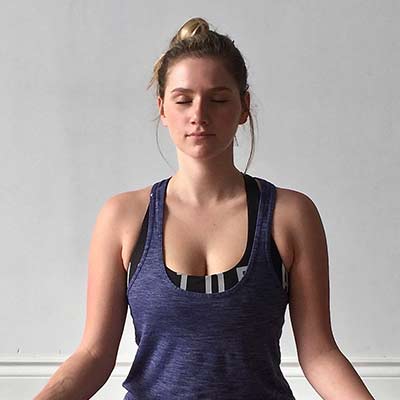
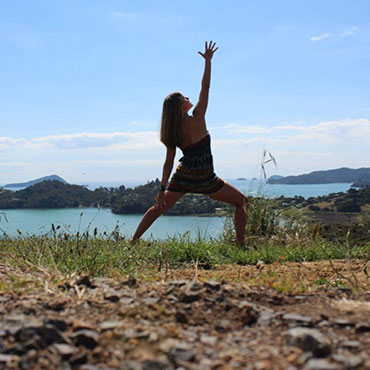
by Maureen O’Shea Brown
There are many opinions out there on what to do when you have anxiety, where to turn for help with anxiety, or what the best approach to anxiety is, but the truth is that battling anxiety is a very individual undertaking and one that requires some thought about who you are and who you want be. It takes self-reflection, an honest understanding of your capabilities and strengths, and a commitment to getting better. In this article I’m going to speak in general about some of the benefits of yoga, however, even if you’re not interested in yoga I encourage you to read it and see if you can apply any of the methods and approaches to the things you love to do. There should be no judgement or self-deprivation, just know you are not the only person to have anxiety, you will not be the last, and your life should be the one you want to live – not the one you feel forced to live. So let’s get to it!
Yoga is a mindful practice. It gives your brain a chance to clear out all of the clutter life has piled up on you and start to understand the inner most parts of your personality and being (Sanskrit: cit). In fact, the goal of yoga is to calm and focus the mind (Patanjali, Yoga Sutra 1.2). The goal is not to put our feet behind our head or stay in hand-stand for two hours, these are often practices of the ego and there is no place for ego when we are trying to feel better about ourselves and our anxiety. There are no expectations, only techniques, practices and repetition.
One of yoga’s best therapeutic practices is breathing. Breathing can be a very effective tool in preventing or minimizing anxiety and anxiety attacks. Our bodies give us clues when we are about to have a wave of anxiety or an anxiety attack: our heart rate increases, our breathing shallows, we might have a tensing of our muscles, or increased body temperature, but our mind is so distracted we often miss these clues until it is too late. Once we start the practice of yoga and mindfulness we can train our brain to notice these changes in our body and in the moment prevent the escalation of these symptoms. This observation can be achieved through the repetition of a mindful practice. This comes with time, so it does require a degree of patience, because as we all know these symptoms happen quickly and they can escalate even quicker.
The other way we can use yoga to minimize the effects of anxiety is through a regular yoga practice, and again if yoga is not your thing some of the therapeutic benefits of yoga can be applied to other activities. The important part is the mindfulness, starting to train the brain – not allowing the brain to be bullied by things like stress, worry, school, friends, parents, lack of control in one’s life and other things that may cause us distraction and suffering. Everything in life is manageable as long as we can keep our mind grounded and be honest with ourselves. The regularity of practice will increase our chances of identifying and minimizing the physical symptoms of anxiety, and strengthen our techniques to manage them. So, if you're about to take a test, and you start to experience the physical symptoms of anxiety, closing the eyes and taking six deep, undistracted breaths will physiologically slow your breathing and heart rate.
It's not going to make the questions on a calculus test easier, but it will allow your brain to focus on the material and information you already have in your brain. Now, for those with serious anxiety, this may not be enough and that’s ok. Maybe it takes twelve breaths, maybe it takes a relaxed walk around the block before you sit down for the test, practicing your deep breathing, maybe you need to stretch, but there are tactics you can try. There are always options. There will be photos linked to this article that will show some postures that can be helpful.
Ok, down to the nitty gritty: for those with anxiety sitting down to meditate and breathe sounds terrifying. I get that. Traditionally, we work through the body – especially when you’re younger – to access the mind. So, if you’ve ever had a doctor tell you to just meditate or just do yoga, it might not have been very helpful advice; excellent intentions because the research is there to support this hypothesis, but the actual process to get there can be tricky. It’s like asking a race horse to walk in slow-motion after a race; it’s probably not going to happen. Most young people, depending on your individual strengths and capabilities need a more active practice that leads to breathing techniques (pranayama) and meditation (dharana). This means it’s ok if your mind is racing at the beginning of a yoga class, keep focused on the physical practice which will help to clear the mind of that life clutter. Your brain is very complex, and though it is not a muscle, it can behave like one. Meaning, it responds to training. Repetition and practice is how we can change the patterns in the brain.
My suggestion is to start with a Vinyasa or flow yoga class, or a practice that will be a little distracting or physically engaging at the beginning, so your mind doesn't have a chance to wonder. As the class progresses, we want a class that slows down enough that you have an opportunity to practice this mindfulness we’re talking about. It slows to a point where you have to be mindful in order to stay on task and focused, and it’s hard. It should be hard, that’s the challenge. And this can be applied to activities like jogging or swimming, where we can focus initially on physical exertion and then as the activity slows down focusing on the mind and breath – the length and quality of the breath, and the quieting of the mind, clarity. Mindfulness is really just the thoughtful observation of ourselves, and with practice it is the thoughtful observation of the body, breath and mind, which leads to a mind that is able to handle all of life’s unexpected journeys.
Specific techniques to practice?
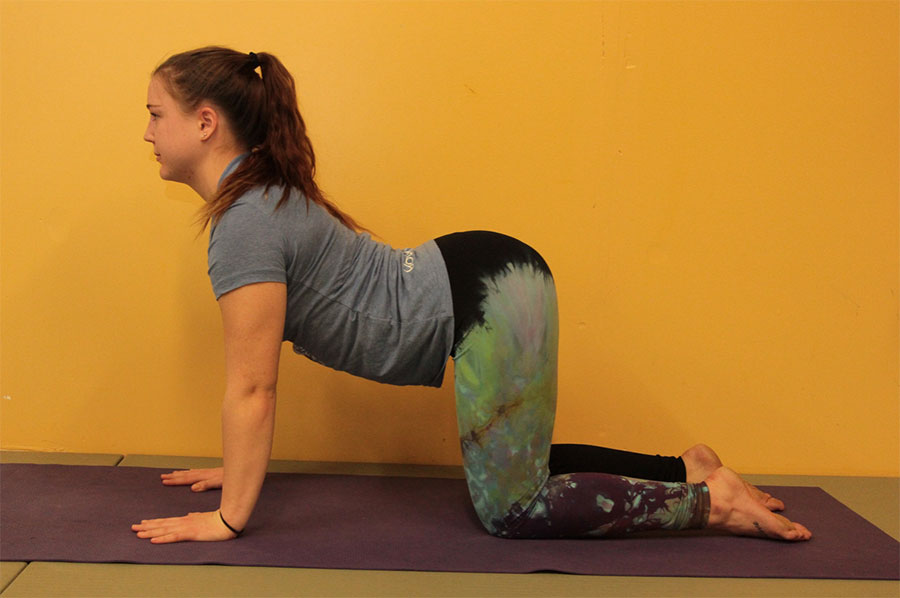
1. Cow Pose
If you’re feeling anxious in a space you’re comfortable doing movement in, get on all fours:
– Inhale, open the chest and head forward (dipping the belly towards the floor)
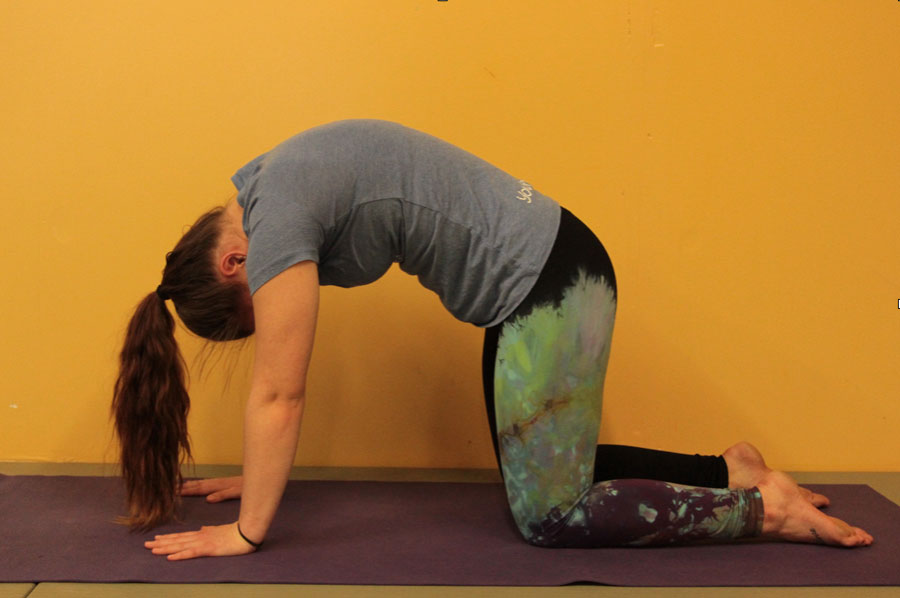
2. Cat Pose
– Exhale, round the middle back towards the ceiling (like a cat) relaxing the neck
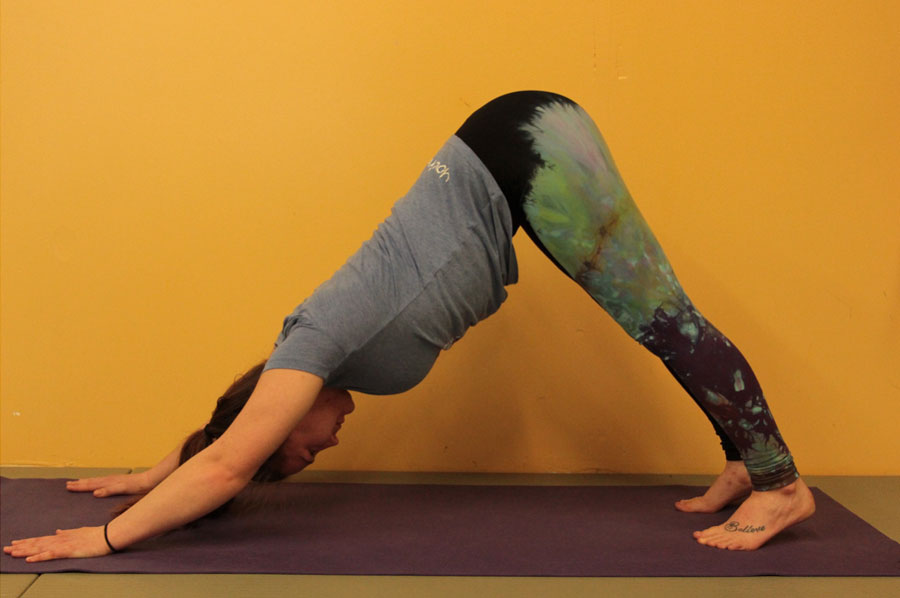
3. Downward Dog
– Take one more inhale opening the chest
– And then curl the toes under, coming into a downward dog
– Repeat this sequence (vinyasa) 6 times, staying longer and longer in downward dog, increasing the length of breath. This should take the tension out of the diaphragm and slow the heart rate.
*Each movement is a whole inhale or a whole exhale, your goal is to slow it down and pair the movement with the breath.
Breathing techniques, you can do while in the classroom, with eyes closed:
– Drop the chin towards the chest and lift the head up as you inhale slowly
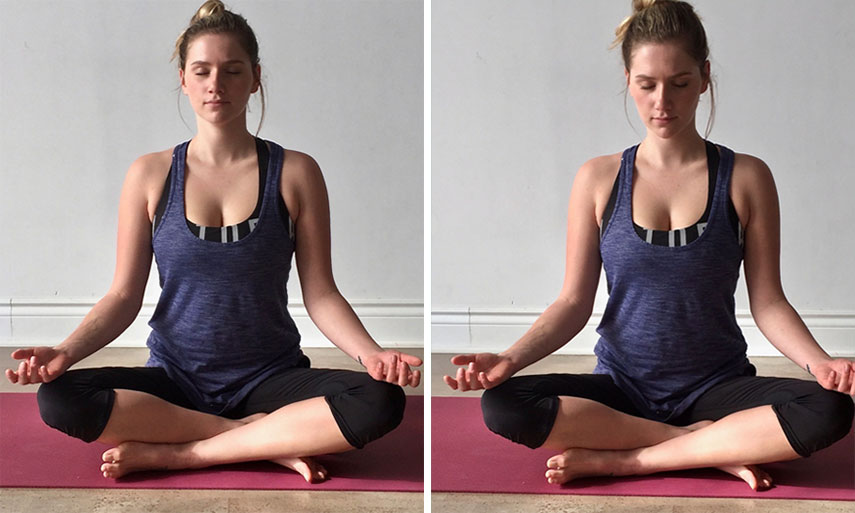
4. Easy Pose
– Exhale, slowly release the head towards the chest again, relaxing those shoulders!
*The deeper the breath the better and if the idea of doing this in a public space freaks you out, go to a washroom stall or library carrel beforehand and do it there, don’t let your ego win! There is nothing wrong with taking preventative steps, and when you perform better on tests, you’ll feel great.
In the photos there will be a couple more sequences (vinyasa-s) that you can practice, but try to get to a yoga class if you can, or any other mindful practice.
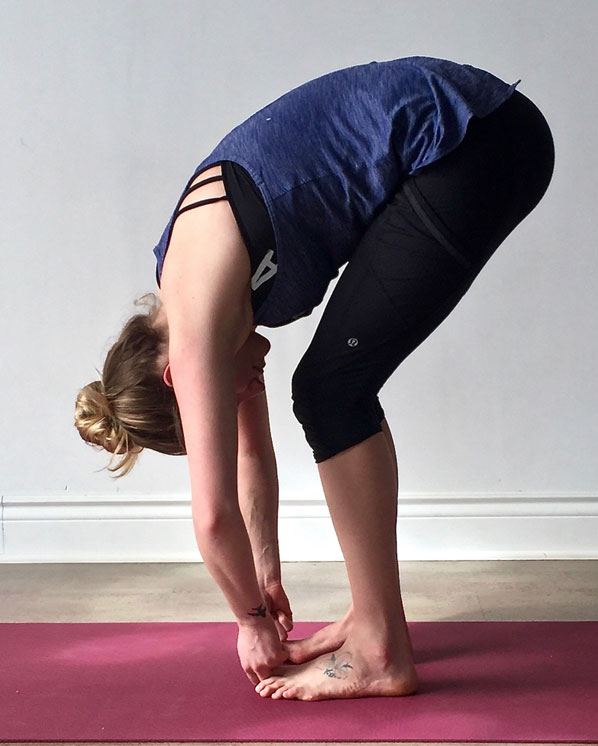
Standing Forward Bend
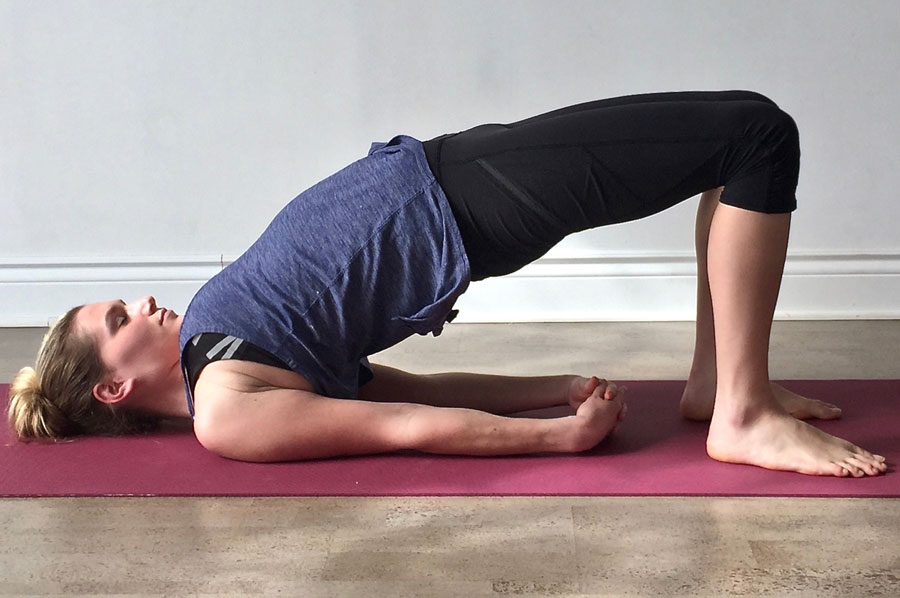
Bridge Pose
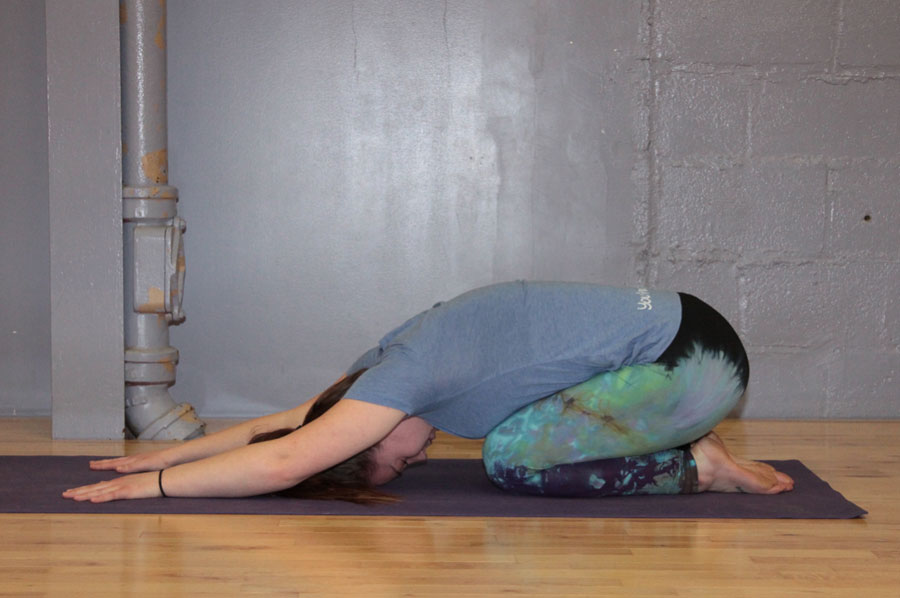
Child's Pose
**If you don’t like the yoga class you try, remember: Yoga is thousands of years old, and was developed with the expressed purpose of easing suffering, so if you don’t like the type of yoga class you go to, or the teacher, no bigs – go somewhere else, try a different teacher, try a different studio. A good yoga teacher will understand if it’s not a good fit for you and should be able to offer advice on other classes that may be more suitable for you.
Best of luck and stay tuned for more yoga related information and practices.
 Maureen O’Shea Brown trained in the Six at YogaSpace in 2004, continuing her education in pre/post natal yoga, restorative yoga as well as in India at the Krishnamacharya Yoga Mandiram in 2006. While in India, Maureen specialized in Vedic chanting and sound in movement. Maureen has taught yoga at the Centre for Addictions and Mental Health (CAMH) with schizophrenic, medical detox and mood and anxiety disorder populations. She has instructed at various yoga studios in Toronto and Uxbridge.
Maureen O’Shea Brown trained in the Six at YogaSpace in 2004, continuing her education in pre/post natal yoga, restorative yoga as well as in India at the Krishnamacharya Yoga Mandiram in 2006. While in India, Maureen specialized in Vedic chanting and sound in movement. Maureen has taught yoga at the Centre for Addictions and Mental Health (CAMH) with schizophrenic, medical detox and mood and anxiety disorder populations. She has instructed at various yoga studios in Toronto and Uxbridge.
- All
-
29 Nutrition
Nutrition
- 73 Mindfulness and Relaxation
- 27 Student Life
- 8 Exercise
- 51 Treatments & Therapies
- Anxiety Resources

Don't see what you're looking for? Send us an email!
©Copyright 2024 Cam’s Kids powered by Kids Help Phone
Not-for-Profit Organization. B/N: 921508-5
Thanks for visiting Cam's Kids. Please remember...
Cam's Kids is not a service provider.
If you are in crisis, please call 911 or go to your nearest emergency department. For free, confidential counselling, contact Good2Talk or Kids Help Phone.
Post-secondary students: find your local crisis resource here.
